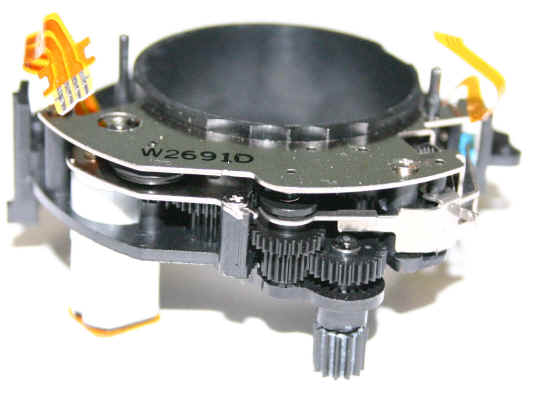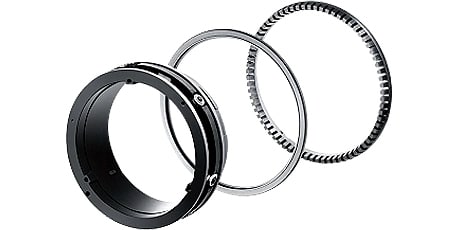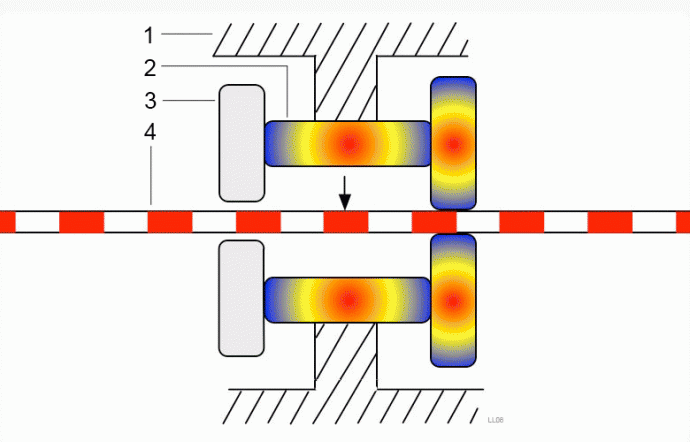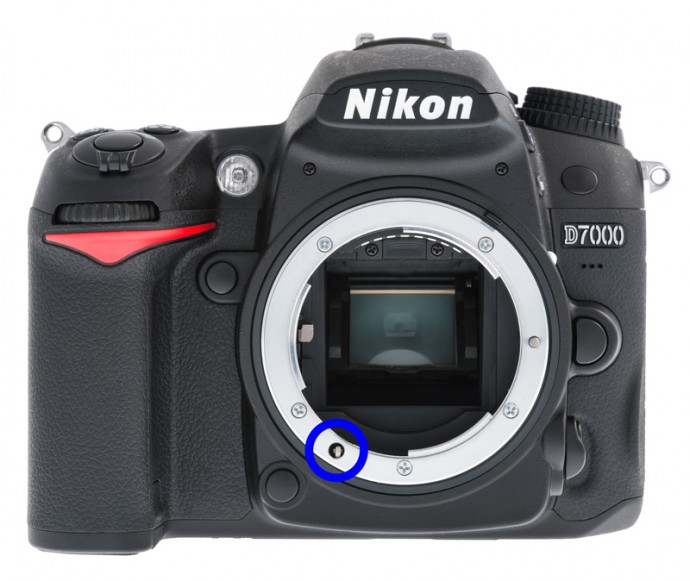How To Fix In Body Focusing Motor On A Lens
Do yous know what kinds of drives are used to auto-focus lenses? Where are manufacturers boasting and what are they hiding? What tin you expect from these drives and how should you treat them? That's what today'southward commodity is all near.
The get-go part of our series on autofocus covered the action inside the camera body. This time we'll cover the main types of mechanical drives used for actually moving the lens.
Mini-motors
The oldest lens drive type is but a small electric motor. (The oldest autofocus blazon has its drive exterior the lens… just we'll get to that.) Tiny gears transfer its motion to the lens, and the whole structure is built to fit within an arched space next to the lenses. That's why these are called Arc Form Drives. Simply yous'll more frequently encounter the name Micro motor. This sometimes uses a slightly different motor than AFD, but information technology works on the same basis.

This drive is easy to produce and implement, and and so this drive is cheap. Just it's likewise loud and slow. That's why it's used in always-fewer lenses—only the cheapest.
Supersonic Motors
Various manufacturers employ various designations for these, so y'all can find them under names like Supersonic motor (SSM), Ultrasonic motor (USM), Silent Wave Motor (SWM), Hyper Sonic Motor (HSM), and more.
This mechanism is a huge advance over simple motors. Information technology's very fast while likewise being very quiet. It's based on piezoelectric materials that change their shape when they receive electric current. The motor looks strange at showtime sight, because information technology's based on just two circles, shown on the right in the picture below:

The components of this motor are fairly big—they wind across the whole circumference of the tube. The toothed wheel is really the key. An current makes it twist and vibrate, creating a sort of wave. It rotates the second bicycle and thus the focusing mechanism. Each such shift is on the order of micrometers (millionths of a meter), merely at that place are tens of thousands of them per second, so the motion is fast and all the same precisely controlled. The "supersonic" in the name refers to the high vibration frequency.
I couldn't find an animation that really reflected the workings of the supersonic motor, merely for illustration here are 2 illustrations showing what piezoelectric materials tin practice: 1 is from Wikipedia and shows a simple, full general piezoelectric motor, while the other shows a slightly different lens motility.

A precision-engineered piezoelectric component twists and, by touching other elements, it sets them into motion.
Besides being fast and silent as mentioned above, this arrangement too lets you manus-focus at whatever time just by twisting the focus band (this is chosen Total Time Manual: FTM). So there's no need to switch from autofocus to manual, considering unless the focusing drive is running at that precise moment, the rings are not engaged, and then manual move can do no harm. Meanwhile with a micro-motor, rotating manually without switching modes means risking damage to the motor or the gears, and could perchance force a visit to a service center to go the lens repaired.
Abbreviations That Prevarication
Supersonic motors have huge benefits, and then manufacturers love to show theirs off: they often include motor-name abbreviations in lens names. But not all supersonics are the round supersonic variants mentioned above.
Canon calls its best motors USM (for Ultrasonic Motor), and it calls the above variant Ring-type USM. Only in some lenses, Canon uses a simplified version called Micro USM, where the rings are much smaller and are placed on the edge of the lens. They class a tiny, separate motor, whose motion is transferred via gears onto the master components. This variant is slower and in some cases it means losing Full Time Transmission (for example in the Canon EF 70-300mm f/4-5.half dozen IS USM). But its name still contains "USM," which is very deceiving.
Stepper Motors
Stepper motors ("STM") have existed for a long fourth dimension, but they but really became viable with the inflow of some recent technologies. Canon currently uses them in certain new mid-range lenses. Their technical details aren't known, only these motors are only slightly slower than supersonics, while being even quieter and having even smoother movement, making them a natural for video. Supersonics are amend for lightning-fast focusing during photography, but the way they work isn't ideal for video. This video gives a beautiful comparing of the two drives:
USM motors sit poorly with video: their motions are jumpier and more than random than a stepper motor.
Motorless Lenses
Motorless lenses have go a rarity today, but you lot will nonetheless see the occasional new lens on the market that uses manual focus alone.
One instance is Samyang lenses. These lenses accept does-the-task quality at a very depression price, and the reason is: no auto focusing mechanisms. They're made for experienced users who don't mind focusing manually.
And so there'south lens maker Zeiss, whose Otus-brand lenses are extremely expensive, but only include an car-focus bulldoze in their versions for Sony and Fuji. The only money that Zeiss is saving is lawsuit money: The Nikon and Catechism variants were restricted via international licenses.
Anyhow—what about you, behind the camera? Well, for video and macro yous're often focusing manually anyway, so for these tasks, a lack of auto-focus is no real loss. We should likewise take note of tilt-shift here. In modern tilt-shift lenses, the focal airplane is tilted, and then autofocus would non work correctly in any example.
Old-school Autofocus
Nikon users with a dearest of the classics need to be careful here. Some old Nikon lenses assume that the photographic camera body itself contains a focusing motor, that turns a tiny screwdriver to plough an autofocus screw inside the lens. So there's no drive inside the lens. The trouble is, these elements are lacking from some of the cheaper Nikon bodies, then you can end upward with your brand new camera not supporting the autofocus in your lens.

Get the Best… or Don't
Now you know all the major autofocus drive types and which ones are the best. But don't retrieve you should ever immediately reject a lens only because of a motor. This article is intended for orientation only—to assist you compare among lenses and to alarm you to deceptive terminology among manufacturers.
You lot merely need a fast motor for certain tasks—mainly sports photography and photographing children. Nature photographers, meanwhile, often focus manually from a tripod and can get by with no autofocus at all.
The engineering in your camera may seem important, merely existence able to employ information technology correctly is even more important. That's the last article in this series volition guide you through actually using your autofocus, no matter what its technologies.
How To Fix In Body Focusing Motor On A Lens,
Source: https://learn.zoner.com/how-your-autofocus-moves-the-lens/
Posted by: tamplinconelays.blogspot.com


0 Response to "How To Fix In Body Focusing Motor On A Lens"
Post a Comment